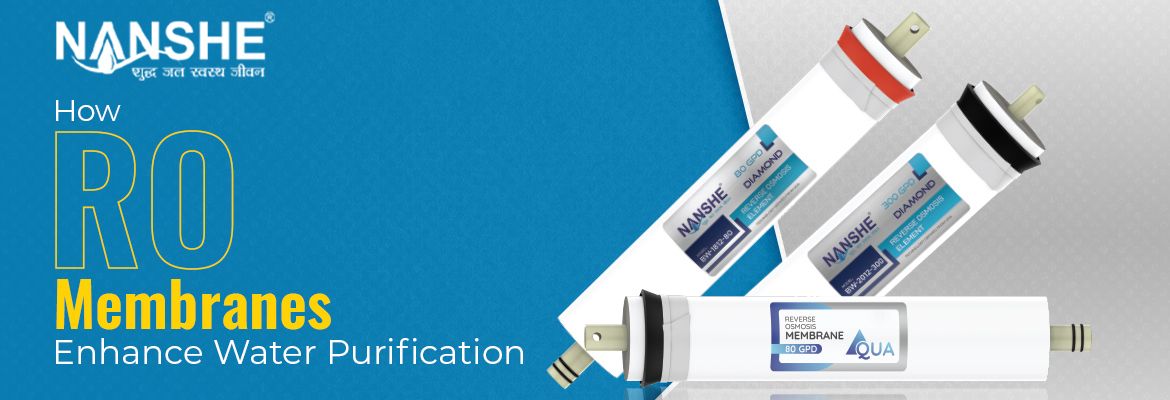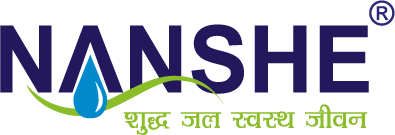
2024-07-26
How RO Membranes Enhance Water Purification
Water purification is one of the most important processes for the availability of clean and safe drinking water. At the center of this process lies the unsung hero: the RO membranes. These thin, semi-permeable barriers are critical in filtering all the dirt and impurities to leave only pure, unadulterated water. This blog post opens up the world of interesting RO membranes and their contribution to water purification. Strap in as we take a closer look into the science and technology that makes our water purifiers so effective.
Importance of Water Purification
It can be applied to remove all kinds of pollution, heavy metals, salt, and other solutes present in the water. The reverse osmosis system is tremendously applicable to a number of industries, which will often supply drinking and irrigation water. It includes the water purifying systems equipped with this RO filtration system, as they can very efficiently be able to remove all kinds of impurities from the water by making them conform to strict safety levels. In this way, it serves human health and environmental sustainability by making secure the safety of the drinking water and protection against waterborne diseases. Water that is clean supports human well-being and contributes to many important benefits for good health by reducing the adverse effects of contaminated water sources.
Basic Reverse Osmosis (RO)
One of the most common methods for water purification is reverse osmosis, where water pressure forces the liquid through a semipermeable membrane to purify water from different impurities. In this manner, it is made sure that plenty of impurities, salts, particles, and bacteria get separated, hence ensuring enormous levels of purity and cleanliness in drinking water. A general understanding of the reverse osmosis membrane becomes necessary if one has to learn about this treatment technology and its applications.
Definition and Explanation of Reverse Osmosis
It is a type of filtration using a special membrane for purifying water by blocking impurities. The water contains the impurities and minerals in all proportions, and by pushing only pure water through this membrane and blocking salts and minerals, a good quality of purified water is obtained. Reverse osmosis finds its importance in industries such as pharmaceuticals, food processing, agriculture, and electronics, due to assured supply of better quality water. The typical components of an RO system include the membrane, the pressure pump, filters, and a storage tank. The RO membrane is maintained at intervals to replace filters and clean it in order to maintain efficiency and ensure long life. Due to the availability of RO technology, pure water is assured for different uses and quality of products improved, thereby reducing the cost that is involved in those industries.
Functioning of semipermeable membranes in the RO process
The membranes are designed to let through only water molecules while blocking contaminants. Typical materials used in these membranes are cellulose acetate and thin-film composites. The filters need frequent cleaning and replacement to sustain efficiency in the systems. The performance of the membranes needs to be under close surveillance frequently since any accumulation of deposits may impair the efficiency levels of the membranes, eventually leading to a stoppage in the production of purified water.
Read More: RO Membranes: Their Role in Water Purification Processes
Role of osmotic pressure in RO
Osmotic pressure is a principle paramount in reverse osmosis. By applying pressure greater than the natural osmotic pressure, the water is pushed through the membrane, leaving behind dissolved salts and impurities. This process can remove 95-99% of dissolved salts, making it very suitable for producing drinking water and treating industrial process water. Osmotic pressure is precisely controlled to ensure an RO system can handle different levels of contamination and still provide consistently clean water.
Parts of a Reverse Osmosis System
Some of the essential parts of an RO include the following:
- Pre-filter: Used in the removal of large particles and protection of the RO membrane
- RO Membrane: The critical element in which the impurities will be filtered out.
- Post-filter: Further purifies water just before storage.
- Storage Tank and Faucet: used for storing and delivering treated water.
Each of them has its function, ensuring that the overall working and operation of the system is maintained. This helps determine how the parts work together to ensure the system is reliable and durable in delivering constant, high-quality water.
Types of RO Membranes
Reverse osmosis (RO) is a popular water purification method that uses a semi-permeable membrane to remove impurities from water. Different types of RO membranes are used for various water treatment applications. These membranes are designed to effectively remove different types of contaminants, ensuring clean and safe drinking water for various purposes. Understanding the different types of Reverse Osmosis filtration membranes and their specific characteristics is important for selecting the best membrane for a particular water treatment project. In the following headings, we will explore the various types and their unique features.
Why choose Nanshe for RO Membranes
Nanshe is a well-known manufacturer of RO membranes, placing a high value on technological advancements in water treatment. Nanshe RO membranes are made utilizing thin-film composites and cellulose acetate to provide high performance and maximum filtering.
Advanced Technology: The Nanshe RO membranes are made to effectively remove impurities, thus allowing the free passage of pure water molecules to deliver clean and safe drinking water.
Reliability and Performance: Based on crucial testing and quality control, Nanshe membranes yield unmitigated performance that is constant and can meet the highest industry standards for purity.
Wide applications: Nanshe RO membranes are reliable for addressing water purification requirements for every sector like residential, commercial, or industrial use
Environmental Responsibility: We design environmentally responsible membranes that help reduce waste and energy, and our work also counts for environmental conservation programs.
Customer Satisfaction: Known for high-level customer service and technical support, Nanshe ensures that clients get personalized help along with dependable solutions to their water purification requirements.
Choosing Nanshe means investing in leading RO membrane solutions guaranteed to provide clean, pure water for diverse applications. Experience the difference with Nanshe to have your water purification needs met with efficiency, reliability, and environmental responsibility.
Conclusion:
Water purification through reverse osmosis (RO) technology is indispensable for ensuring access to clean and safe drinking water. The RO membranes at the heart of this process effectively filter out impurities, safeguarding public health and supporting environmental sustainability. From homes to industries, RO systems play a crucial role in providing high-quality water essential for various applications Nanshe, with its innovative RO membranes, and other RO Products at the forefront of this vital technology. Their commitment to quality, reliability, and environmental responsibility makes them a trusted choice for water purification manufacturer and supplier. By choosing Nanshe, you ensure that your water is purified to the highest standards, contributing to better health and a cleaner environment. Invest in Nanshe's advanced RO membranes for superior water purification and experience the benefits of clean, safe water for all your needs.
© Copyright 2022 by Nanshe

